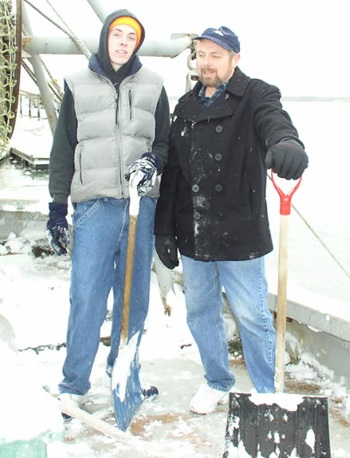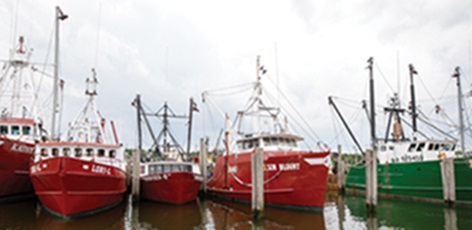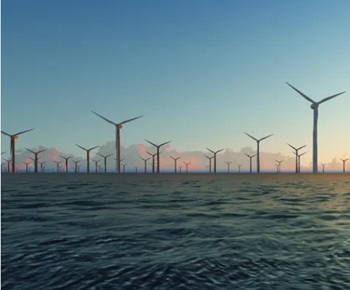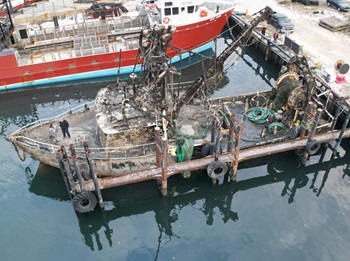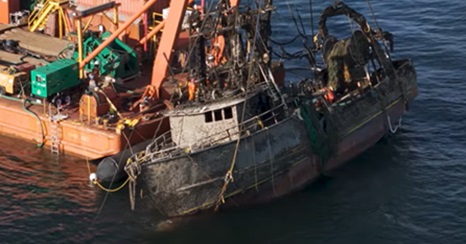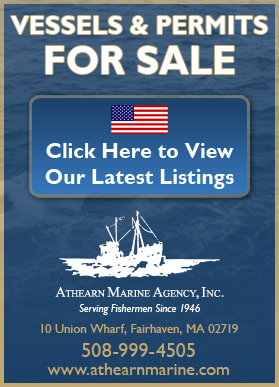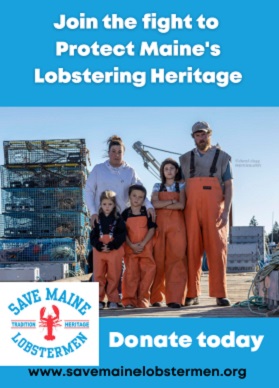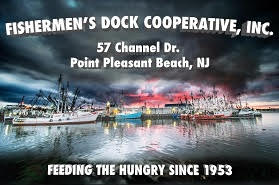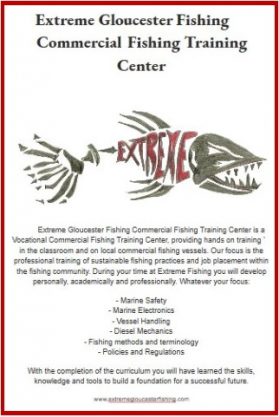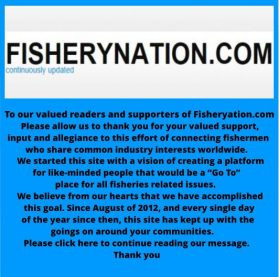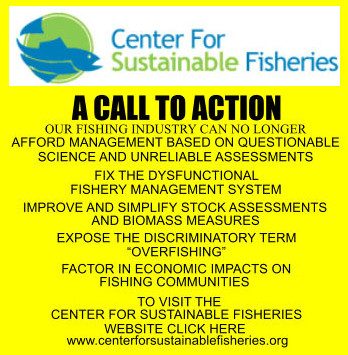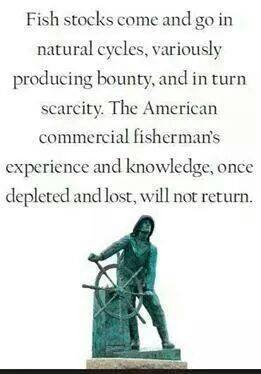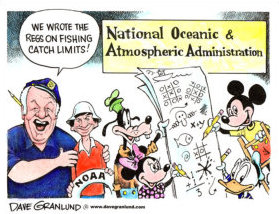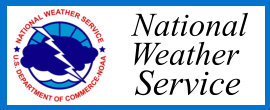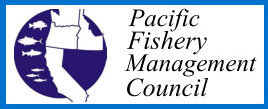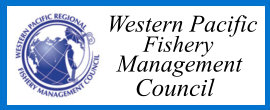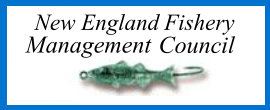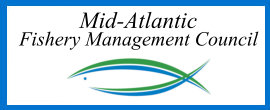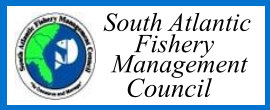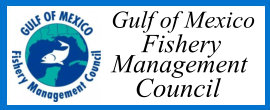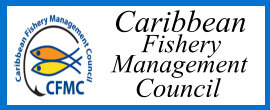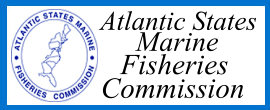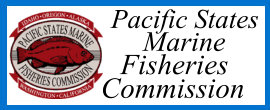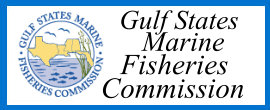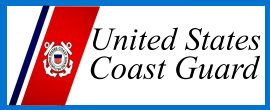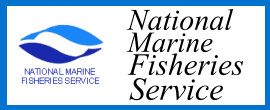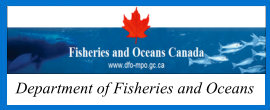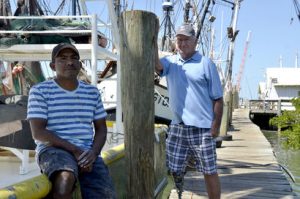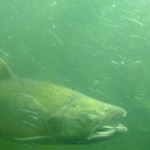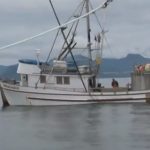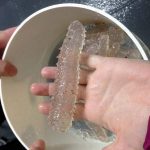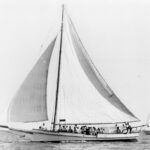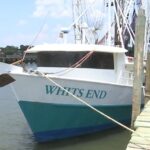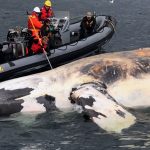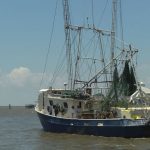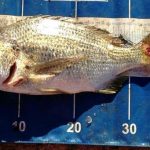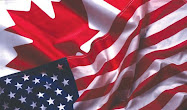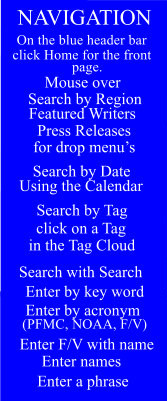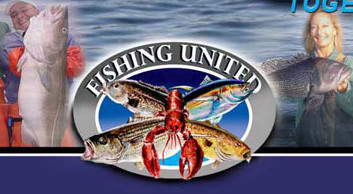Category Archives: Mid Atlantic
Notice of Proposed Rulemaking: Chapter 25.76 Lobster Minimum Size
 This proposed rule-making incorporates the minimum lobster size required by Addendum XXVII: Increasing Protection of the Gulf of Maine/Georges Bank Spawning Stock that was originally approved by the Atlantic States Marine Fisheries Commission (ASMFC) in May 2023. In October 2024 Addendum XXXI postponed the implementation of certain measures from Addendum XXVII to July 1, 2025. For compliance with the current Interstate Fisheries Management Plan, this regulation implements changing the minimum size of lobster from 3 ¼ inches to 3 5/16 inches, effective July 1, 2025. more, >>CLICK TO READ<< 09:43
This proposed rule-making incorporates the minimum lobster size required by Addendum XXVII: Increasing Protection of the Gulf of Maine/Georges Bank Spawning Stock that was originally approved by the Atlantic States Marine Fisheries Commission (ASMFC) in May 2023. In October 2024 Addendum XXXI postponed the implementation of certain measures from Addendum XXVII to July 1, 2025. For compliance with the current Interstate Fisheries Management Plan, this regulation implements changing the minimum size of lobster from 3 ¼ inches to 3 5/16 inches, effective July 1, 2025. more, >>CLICK TO READ<< 09:43
Endangered whales found entangled in fishing gear off Massachusetts coast
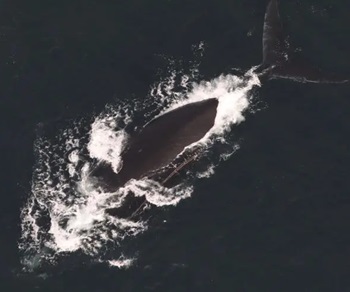 Two endangered whales have been discovered entangled in fishing line off the coast of Massachusetts, the National Oceanic and Atmospheric Administration announced Tuesday, as biologists warned one of the whales is “likely to die.” NOAA said the pair of North Atlantic right whales was found during an aerial survey on Dec. 9, approximately 50 miles southeast of Nantucket. NOAA Fisheries biologists said a juvenile male, #5110, has a thick line that passes across his head and once across his back, leaving him “seriously injured” and likely to die. NOAA said it is currently monitoring the federally protected whales and will determine “if entanglement responses will be possible.” Video, more, >>CLICK TO READ<< 08:11
Two endangered whales have been discovered entangled in fishing line off the coast of Massachusetts, the National Oceanic and Atmospheric Administration announced Tuesday, as biologists warned one of the whales is “likely to die.” NOAA said the pair of North Atlantic right whales was found during an aerial survey on Dec. 9, approximately 50 miles southeast of Nantucket. NOAA Fisheries biologists said a juvenile male, #5110, has a thick line that passes across his head and once across his back, leaving him “seriously injured” and likely to die. NOAA said it is currently monitoring the federally protected whales and will determine “if entanglement responses will be possible.” Video, more, >>CLICK TO READ<< 08:11
Worcester launches plan to buy Ocean City fishing harbor seafood businesses, block US Wind
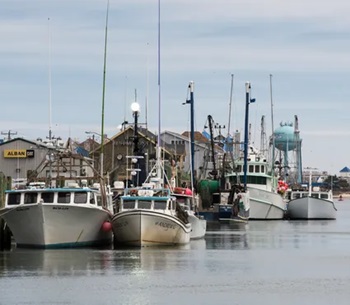 The Worcester County Commissioners on Tuesday launched what they’re hailing as “efforts to purchase two properties located in the West Ocean City (WOC) commercial maritime harbor to protect the county’s historic commercial and sport fishing industries.” Here’s what to know. These sites, which Commissioners said house the only two commercial seafood wholesalers where watermen can offload and sell their catches, are the Southern Connection Seafood and the Martin Fish Company properties. Plans for the two properties include developing a long-term lease with the existing owners to allow them to continue serving the needs of the commercial fishing industry, according to a commissioner’s release. more, >>CLICK TO READ<< 07:28
The Worcester County Commissioners on Tuesday launched what they’re hailing as “efforts to purchase two properties located in the West Ocean City (WOC) commercial maritime harbor to protect the county’s historic commercial and sport fishing industries.” Here’s what to know. These sites, which Commissioners said house the only two commercial seafood wholesalers where watermen can offload and sell their catches, are the Southern Connection Seafood and the Martin Fish Company properties. Plans for the two properties include developing a long-term lease with the existing owners to allow them to continue serving the needs of the commercial fishing industry, according to a commissioner’s release. more, >>CLICK TO READ<< 07:28
Athearn Marine Agency Boat of the Week: 62′ Steel Longliner with Permit, 400HP Cummins
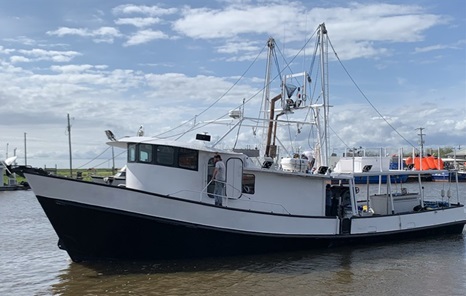 To review specifications, information, and 47 photos’, >click here<. To see all the boats in this series >click here< 06:00
To review specifications, information, and 47 photos’, >click here<. To see all the boats in this series >click here< 06:00

New England scallopers face a tough 2025
New England scallopers are looking at another tough year in 2025, as they prepare for a set of federal regulations to protect both their livelihoods and the Atlantic Ocean’s scallop populations. If approved by NOAA Fisheries, the new rules, called Scallop Framework 39, will reduce the number of times that full-time vessels can go drag in some federally-managed scalloping grounds — called “access areas” — in the 2025 fishing year. But they will allow these vessels more time to scallop in the open ocean. The start of the access-area scalloping season will also be pushed back from April 1 to May 15, 2025. It will end on March 31, 2026. Local scallopers and industry representatives say the contents of Framework 39 are not a surprise. Landings have been shrinking over the past four years. “We’re just tightening the belt, and taking a deep breath, and riding the storm out,” said New Bedford scallop vessel manager and owner Tony Alvernaz. more, >>CLICK TO READ<< 17:50
Worcester County to Use Eminent Domain on Seafood Properties Tapped by US Wind
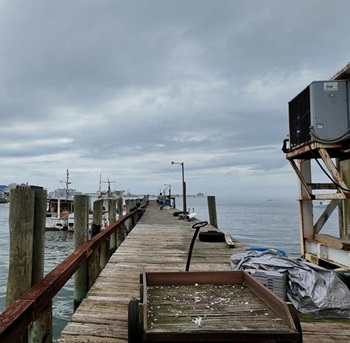 Worcester County Commissioners have announced plans to use eminent domain to prevent US Wind from purchasing two seafood wholesale properties in West Ocean City’s commercial maritime harbor. The move comes as US Wind’s parent company, Renexia SpA, looked to demolish the harbor’s only commercial seafood wholesalers, Southern Connection Seafood and the Martin Fish Company, according to a press release. Commissioners cited several reasons for taking action, including the commercial fishing industry’s impact on the regional economy and federal fishery catch quotas which require unloading in a Maryland port. more, >>CLICK TO READ<< 11:24
Worcester County Commissioners have announced plans to use eminent domain to prevent US Wind from purchasing two seafood wholesale properties in West Ocean City’s commercial maritime harbor. The move comes as US Wind’s parent company, Renexia SpA, looked to demolish the harbor’s only commercial seafood wholesalers, Southern Connection Seafood and the Martin Fish Company, according to a press release. Commissioners cited several reasons for taking action, including the commercial fishing industry’s impact on the regional economy and federal fishery catch quotas which require unloading in a Maryland port. more, >>CLICK TO READ<< 11:24
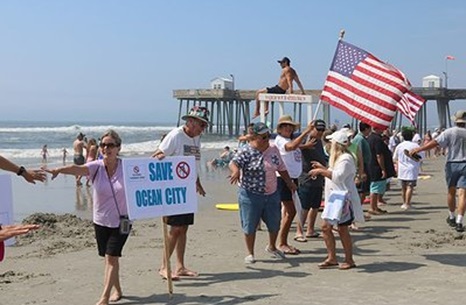
Cape May County Ends Litigation Over Failed Wind Energy Project
Cape May County has ended its legal battle against a proposed offshore wind energy farm after the state and federal agencies that had supported the project admitted it is “dead and will not be coming back to life.” The county had filed state and federal lawsuits to block the wind farm proposed by the Danish energy company Orsted 15 miles off the coast between Atlantic City and Stone Harbor. In the suits, the county alleged that the project would have caused far-reaching economic and environmental harm to the tourism industry, commercial fishing, migratory birds and marine life such as dolphins and whales. “By Orsted’s own calculation, Cape May County was facing a loss of over $1 billion in tourism revenue. Our fisheries industry was facing millions of dollars in losses. Marine mammals and other sea life were threatened with injury and harassment,” Cape May County Board of Commissioners Director Leonard Desiderio said in a news release Monday announcing the end of the ligation. Photos, more, >>CLICK TO READ<< Congratulations! 13:12
NCFA Weekly Update for December 16, 2024 – Atlantic Striped Bass, Yet Another Discard Fishery
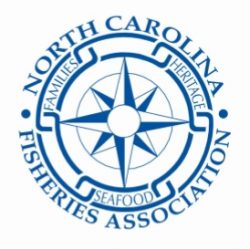 The Atlantic States Marine Fisheries Commission’s (ASMFC) Atlantic Striped Bass Management Board meets today (December 16th) from 10:00am to 2:00pm. Although North Carolina does not really have an Atlantic striped bass fishery anymore, the issues facing striped bass is the same thing we are seeing with many other stocks. For years we have only regulated harvest; limiting harvest days for recreational and commercial fishermen, increasing minimum size limits, lowering bag and trip limits, setting small slot limits, closing areas to commercial gear, modifying commercial gear; never ending harvest restrictions. Sound familiar? more, >>CLICK TO READ<< 10:45
The Atlantic States Marine Fisheries Commission’s (ASMFC) Atlantic Striped Bass Management Board meets today (December 16th) from 10:00am to 2:00pm. Although North Carolina does not really have an Atlantic striped bass fishery anymore, the issues facing striped bass is the same thing we are seeing with many other stocks. For years we have only regulated harvest; limiting harvest days for recreational and commercial fishermen, increasing minimum size limits, lowering bag and trip limits, setting small slot limits, closing areas to commercial gear, modifying commercial gear; never ending harvest restrictions. Sound familiar? more, >>CLICK TO READ<< 10:45
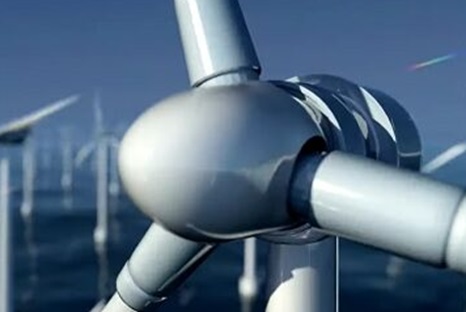
BOEM admits potentially irreversible harm to whales, fisheries, and seabirds
A government regulator recognizing offshore wind’s destructive environmental effects is as rare as a North Atlantic right whale. But a recent, 600-plus page report from the Bureau of Ocean Energy Management (BOEM) admits that the offshore wind development planned for the New York Bight, the triangular area bordered by the New Jersey and Long Island coastlines may irreversibly harm whales, commercial and recreational fisheries, and seabirds. The BOEM report is the agency’s first to evaluate the cumulative impacts of offshore wind development. Its authors cite a wide range of potential effects, from negligible (or even beneficial) to major. Acknowledging potentially “major” harms is a radical departure from the agency’s previously accepted Environmental Impact Statements for offshore wind projects, which have always focused on the impacts of individual projects, rather than the cumulative impacts of multiple projects. more, >>CLICK TO READ<< 07:28
Point Pleasant fisherman James N. Mathews has passed away
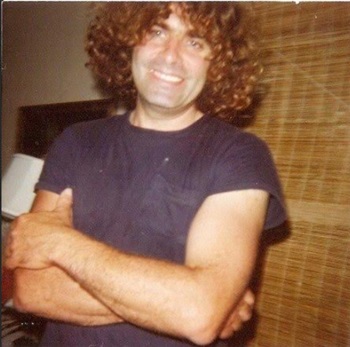 James Nestor Mathews passed away on December 4th, 2024 after 80 years of living life to its fullest. Jimmy spent over 60 years doing what he enjoyed most, catching fish from his home port of Point Pleasant NJ. He was born on October 9 th , 1944 in East Orange NJ and moved with his parents and siblings to Point Pleasant, NJ in 1956. It was there that Jimmy’s life long love of fishing took root, as he started working with his dad on his party boat the Flying Fish in the early 1960’s. During those early years with his father, Jimmy became interested in the local commercial fishing scene, and learned how to gill net, along with his life long friend Joey Pierce on a small skiff operated by Adolph Lovgren. It wasn’t long before Jimmy and Joey bought their own Skiffs to pursue the American dream. After a few years Jimmy was ready to move into a bigger boat and bought the Five Devils in 1971, a 57-foot-long dragger that worked out of the Fisherman’s Dock Co-op. He renamed it the Chrissy James and soon developed a reputation of fearlessness by fishing in some extreme weather conditions. Photos, more, >>CLICK TO READ<< 16:36
James Nestor Mathews passed away on December 4th, 2024 after 80 years of living life to its fullest. Jimmy spent over 60 years doing what he enjoyed most, catching fish from his home port of Point Pleasant NJ. He was born on October 9 th , 1944 in East Orange NJ and moved with his parents and siblings to Point Pleasant, NJ in 1956. It was there that Jimmy’s life long love of fishing took root, as he started working with his dad on his party boat the Flying Fish in the early 1960’s. During those early years with his father, Jimmy became interested in the local commercial fishing scene, and learned how to gill net, along with his life long friend Joey Pierce on a small skiff operated by Adolph Lovgren. It wasn’t long before Jimmy and Joey bought their own Skiffs to pursue the American dream. After a few years Jimmy was ready to move into a bigger boat and bought the Five Devils in 1971, a 57-foot-long dragger that worked out of the Fisherman’s Dock Co-op. He renamed it the Chrissy James and soon developed a reputation of fearlessness by fishing in some extreme weather conditions. Photos, more, >>CLICK TO READ<< 16:36
NJ Offshore Wind Monopiles Are Being Scrapped At Port
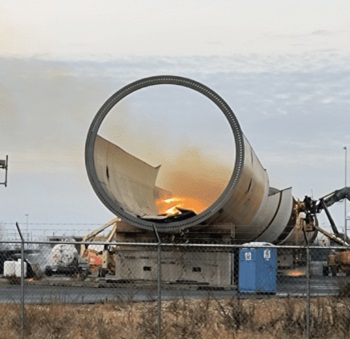 Several massive offshore wind monopiles, manufactured at New Jersey’s cutting-edge Wind Port, are being scrapped instead of heading out to sea to become wind turbines. New Jersey’s Wind Port, located in Lower Alloways Creek was designed to be a hub for offshore wind construction, supporting the state’s ambitious clean energy goals. However, recent reports and photos indicate that monopiles at the facility are being scrapped so the material can be used for other projects. The dismantling comes in the wake of a major setback for NJ Offshore Wind. About a year ago, Ørsted, a leading wind energy developer, abruptly canceled two offshore wind projects planned for the state. Photos, more, >>CLICK TO READ<< 10:14
Several massive offshore wind monopiles, manufactured at New Jersey’s cutting-edge Wind Port, are being scrapped instead of heading out to sea to become wind turbines. New Jersey’s Wind Port, located in Lower Alloways Creek was designed to be a hub for offshore wind construction, supporting the state’s ambitious clean energy goals. However, recent reports and photos indicate that monopiles at the facility are being scrapped so the material can be used for other projects. The dismantling comes in the wake of a major setback for NJ Offshore Wind. About a year ago, Ørsted, a leading wind energy developer, abruptly canceled two offshore wind projects planned for the state. Photos, more, >>CLICK TO READ<< 10:14
A Rebuttal to a Recent Commentary: Alaska trawl fisheries are vital and under attack by those using myths
 This campaign to ban trawling – a sustainable fishing method responsible for a substantial majority of fishery landings in the Alaska Region and nationally – poses a direct threat to Alaska’s coastal economy, seafood sector and way of life. If you enjoy wild seafood – fish sandwiches or shrimp; fish sticks or scallops; fish tacos or rockfish – you are enjoying seafood caught by “trawl” or “dredge” fishing gears that touch the seafloor. It’s true that these fishing methods, like every farm, aquaculture facility and fishing operation on the planet, impact the environment. But, what’s also true is that the impacts of trawl fishing in Alaska are continually monitored to ensure long-term ecosystem health. The recent commentary authored for the Alaska Beacon by Heather Sauyaq Jean Gordon and David Bayes is the latest effort to demonize sustainable trawl fisheries. Like other attacks on our sector, the commentary comes from a vocal few that play fast and loose with the facts. By Sam Wright, more, >>CLICK TO READ<< 11:43
This campaign to ban trawling – a sustainable fishing method responsible for a substantial majority of fishery landings in the Alaska Region and nationally – poses a direct threat to Alaska’s coastal economy, seafood sector and way of life. If you enjoy wild seafood – fish sandwiches or shrimp; fish sticks or scallops; fish tacos or rockfish – you are enjoying seafood caught by “trawl” or “dredge” fishing gears that touch the seafloor. It’s true that these fishing methods, like every farm, aquaculture facility and fishing operation on the planet, impact the environment. But, what’s also true is that the impacts of trawl fishing in Alaska are continually monitored to ensure long-term ecosystem health. The recent commentary authored for the Alaska Beacon by Heather Sauyaq Jean Gordon and David Bayes is the latest effort to demonize sustainable trawl fisheries. Like other attacks on our sector, the commentary comes from a vocal few that play fast and loose with the facts. By Sam Wright, more, >>CLICK TO READ<< 11:43
Athearn Marine Agency Boat of the Week: 44’11” Provincial Longliner Rod & Reel
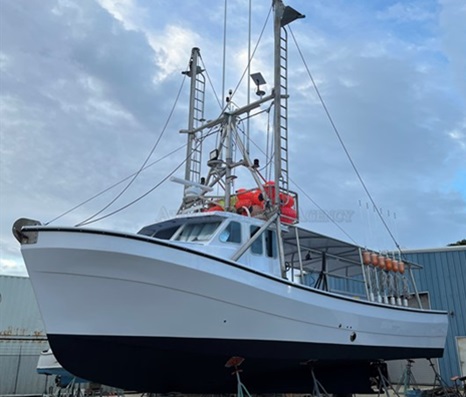 To review specifications, information, and 37 photos’, >click here<. To see all the boats in this series >click here< 06:21
To review specifications, information, and 37 photos’, >click here<. To see all the boats in this series >click here< 06:21
Vineyard Wind Withstands Another Legal Challenge
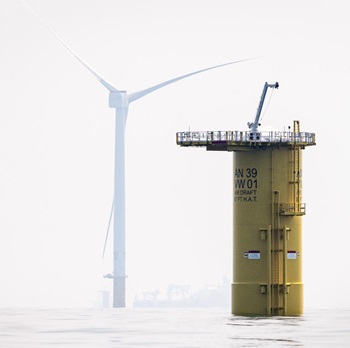 Another attempt to halt Vineyard Wind through the courts fell short last week when a federal court dismissed an appeal by a fishermen’s organization and a Rhode Island seafood dealer. A panel of judges with the U.S. First Circuit Court of Appeals upheld a lower court’s decision on Dec. 5, saying the group’s claims that the federal government mishandled the approval process for the wind farm were unfounded. The decision is one of several that Vineyard Wind, which aims to build 62 turbines to the south of the Island, has weathered in recent years, keeping the project’s approvals from the Bureau of Ocean Energy Management intact. Seafreeze Shoreside, a Rhode Island-based seafood dealer, the Long Island Commercial Fishing Association, the Responsible Offshore Development Alliance and other groups filed the appeal after their claims were rejected by the U.S. District Court in Boston in 2023. more, >>CLICK TO READ<< 12:47
Another attempt to halt Vineyard Wind through the courts fell short last week when a federal court dismissed an appeal by a fishermen’s organization and a Rhode Island seafood dealer. A panel of judges with the U.S. First Circuit Court of Appeals upheld a lower court’s decision on Dec. 5, saying the group’s claims that the federal government mishandled the approval process for the wind farm were unfounded. The decision is one of several that Vineyard Wind, which aims to build 62 turbines to the south of the Island, has weathered in recent years, keeping the project’s approvals from the Bureau of Ocean Energy Management intact. Seafreeze Shoreside, a Rhode Island-based seafood dealer, the Long Island Commercial Fishing Association, the Responsible Offshore Development Alliance and other groups filed the appeal after their claims were rejected by the U.S. District Court in Boston in 2023. more, >>CLICK TO READ<< 12:47
First Circuit likely to save the whales despite lobstermen’s complaints
 An epic sea battle unfolded at the First Circuit Tuesday as Massachusetts fishermen tried to harpoon federal regulations that protect the North Atlantic right whale. But it appeared the judges were on the whales’ side and, as in “Moby Dick,” the fishermen may end up shipwrecked. At issue is a federal rule that limits lobster and Jonah crab fisheries’ use of buoy lines, which can entangle and kill whales. The fishermen’s lawyer, Daniel Cragg, told the judges that the rule resulted from Congress making a “drafting failure,” but the judges seemed incredulous. more, >>CLICK TO READ<< 10:52
An epic sea battle unfolded at the First Circuit Tuesday as Massachusetts fishermen tried to harpoon federal regulations that protect the North Atlantic right whale. But it appeared the judges were on the whales’ side and, as in “Moby Dick,” the fishermen may end up shipwrecked. At issue is a federal rule that limits lobster and Jonah crab fisheries’ use of buoy lines, which can entangle and kill whales. The fishermen’s lawyer, Daniel Cragg, told the judges that the rule resulted from Congress making a “drafting failure,” but the judges seemed incredulous. more, >>CLICK TO READ<< 10:52
Ocean City continues with lawsuit following US Wind receiving final approval
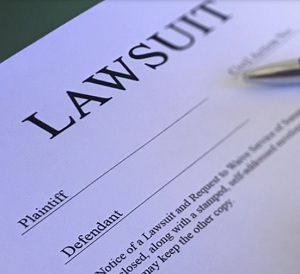 US Wind, Inc. announced Tuesday that the Bureau of Ocean Energy Management has granted final approval for the company’s Construction and Operations Plan, completing the federal permitting process for its offshore wind project. However, the project has faced significant opposition from the Ocean City community and other local organizations. The Town of Ocean City, joined by groups such as the Worcester County Commissioners, Coastal Association of Realtors and the Commercial and Recreational Fishing Industry, say they will continue to move forward with a lawsuit against BOEM to challenge its approval of US Wind’s project. more, >>CLICK TO READ<< 09:41
US Wind, Inc. announced Tuesday that the Bureau of Ocean Energy Management has granted final approval for the company’s Construction and Operations Plan, completing the federal permitting process for its offshore wind project. However, the project has faced significant opposition from the Ocean City community and other local organizations. The Town of Ocean City, joined by groups such as the Worcester County Commissioners, Coastal Association of Realtors and the Commercial and Recreational Fishing Industry, say they will continue to move forward with a lawsuit against BOEM to challenge its approval of US Wind’s project. more, >>CLICK TO READ<< 09:41
Athearn Marine Agency Boat of the Week: 49′ Fiberglass Gillnetter/Lobster Boat w/ Permits, Cat 3406B
 To review specifications, information, and 7 photos’, >click here<. To see all the boats in this series >click here< 06:10
To review specifications, information, and 7 photos’, >click here<. To see all the boats in this series >click here< 06:10
NOAA Fisheries Announces Closure of Commercial Atlantic Mackerel Fishery
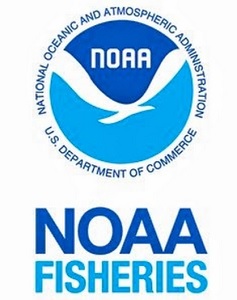 NOAA Fisheries has projected that 80 percent of the Atlantic mackerel domestic annual harvest (DAH) was harvested by November 29, 2024. Therefore, effective 0001 local time on December 6, 2024, limited access mackerel vessels may not take and retain, possess, or land more than 10,000 lb of mackerel per trip at any time, and may only land mackerel once per calendar day, through 24:00 hr local time on December 31, 2024. Additionally, open access mackerel vessels may not take and retain, possess, or land more than 2,500 lb. of mackerel per trip at any time, and may only land mackerel once per calendar day, through 24:00 hr local time on December 31, 2024. more, >>CLICK TO READ<< 14:12
NOAA Fisheries has projected that 80 percent of the Atlantic mackerel domestic annual harvest (DAH) was harvested by November 29, 2024. Therefore, effective 0001 local time on December 6, 2024, limited access mackerel vessels may not take and retain, possess, or land more than 10,000 lb of mackerel per trip at any time, and may only land mackerel once per calendar day, through 24:00 hr local time on December 31, 2024. Additionally, open access mackerel vessels may not take and retain, possess, or land more than 2,500 lb. of mackerel per trip at any time, and may only land mackerel once per calendar day, through 24:00 hr local time on December 31, 2024. more, >>CLICK TO READ<< 14:12
Athearn Marine Agency Boat of the Week: 42′ H&H Lobster Boat, 550HP John Deere Diesel
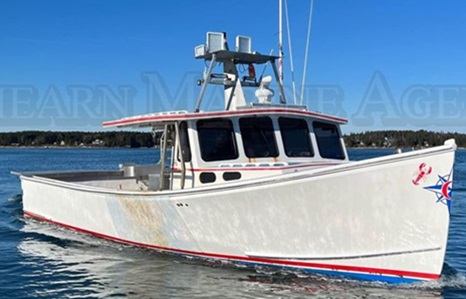 To review specifications, information, and 27 photos’, >click here<. To see all the boats in this series >click here< 06:02
To review specifications, information, and 27 photos’, >click here<. To see all the boats in this series >click here< 06:02
New England labor unions call for faster offshore wind buildout
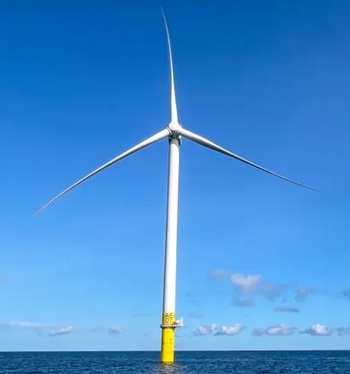 “We looked at the way this industry was starting to develop and thought to ourselves: How can we work as a labor movement to make sure we’re making this an industry that is not only going to benefit the climate but benefit our members?” (read the report) said Patrick Crowley, president of the Rhode Island chapter of the American Federation of Labor and Congress of Industrial Organizations (AFL-CIO), which represents roughly 900,000 union members across the three states. Crowley and the AFL-CIO partnered with the Climate Jobs National Resource Center and unions in Massachusetts and Connecticut to put together the new report, which outlines how the industry can expand with organized labor at the forefront. To begin with, the union report suggests that the states aim higher for their offshore wind goals in order to boost the region’s economy and take full advantage of their unique access to wind. more, >>CLICK TO READ<< 09:25
“We looked at the way this industry was starting to develop and thought to ourselves: How can we work as a labor movement to make sure we’re making this an industry that is not only going to benefit the climate but benefit our members?” (read the report) said Patrick Crowley, president of the Rhode Island chapter of the American Federation of Labor and Congress of Industrial Organizations (AFL-CIO), which represents roughly 900,000 union members across the three states. Crowley and the AFL-CIO partnered with the Climate Jobs National Resource Center and unions in Massachusetts and Connecticut to put together the new report, which outlines how the industry can expand with organized labor at the forefront. To begin with, the union report suggests that the states aim higher for their offshore wind goals in order to boost the region’s economy and take full advantage of their unique access to wind. more, >>CLICK TO READ<< 09:25
N.C. Division of Marine Fisheries sinks trawler at artificial reef site off Cape Lookout
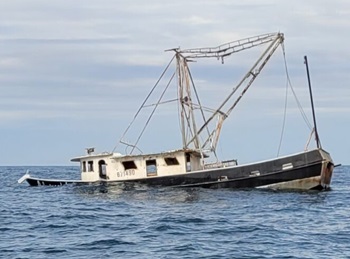 The state Artificial Reef Program sank a 55-foot trawler at the artificial reef site, AR-305, off Cape Lookout, last week. The program is part of the North Carolina Department of Environmental Quality’s Division of Marine Fisheries. The fishing vessel Alexandria Dawn, the latest addition to the artificial reef, was built in 1984, but has been out of use for around a decade, division officials announced Monday. Before sinking, the vessel was cleaned extensively in accordance with Environmental Protection Agency requirements, officials said. more, >>CLICK TO READ<< 12:14
The state Artificial Reef Program sank a 55-foot trawler at the artificial reef site, AR-305, off Cape Lookout, last week. The program is part of the North Carolina Department of Environmental Quality’s Division of Marine Fisheries. The fishing vessel Alexandria Dawn, the latest addition to the artificial reef, was built in 1984, but has been out of use for around a decade, division officials announced Monday. Before sinking, the vessel was cleaned extensively in accordance with Environmental Protection Agency requirements, officials said. more, >>CLICK TO READ<< 12:14
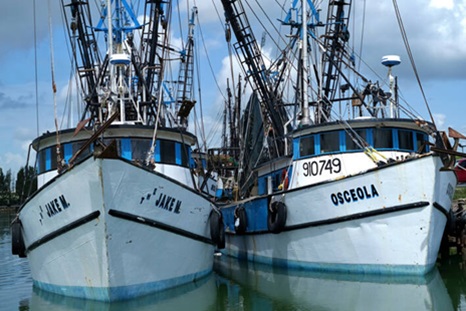
Struggling Valley shrimpers receive good news on new import measures
In an industry where bad news is the norm, shrimpers in Texas and elsewhere in the United States finally have a sliver of good news. The U.S. International Trade Commission, or ITC, on Tuesday determined that the U.S. shrimp industry is being “materially injured” by imports of frozen warm-water shrimp from Indonesia that the U.S. Department of Commerce says are being sold in this country at less than fair value, and also by shrimp imports from Ecuador, India and Vietnam that the Commerce Department says are being subsidized by the governments of those countries. As a result of the ITC’s determinations, the Commerce Department will issue “countervailing duty orders on imports of this product from Ecuador, India and Vietnam and an anti-dumping duty order on imports of this product from Indonesia,” the ITC announced Tuesday. more, >>CLICK TO READ<< 11:57
Exploring the impact of offshore wind on whale deaths
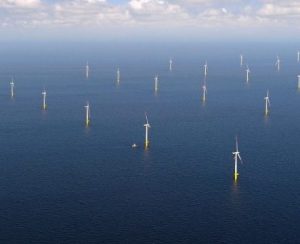 In the winter of 2022–2023, nearly a dozen whales died off the coast of New Jersey, near the sites of several proposed wind farms. Their deaths prompted concern that related survey work being conducted in the area somehow contributed to their deaths. The increased presence of these turbines in coastal waters, along with the noise from construction and surveys, has led to concerns of their impact on marine life. In particular, cetaceans such as whales and dolphins are likely to be sensitive to the noises and increased marine traffic brought by these turbines. However, the Marine Mammal Commission, a federal oversight agency, states there is no evidence linking the whales that died in the New Jersey region in the winter of 2022–2023 to wind energy development. more, >>CLICK TO READ<< 10:35
In the winter of 2022–2023, nearly a dozen whales died off the coast of New Jersey, near the sites of several proposed wind farms. Their deaths prompted concern that related survey work being conducted in the area somehow contributed to their deaths. The increased presence of these turbines in coastal waters, along with the noise from construction and surveys, has led to concerns of their impact on marine life. In particular, cetaceans such as whales and dolphins are likely to be sensitive to the noises and increased marine traffic brought by these turbines. However, the Marine Mammal Commission, a federal oversight agency, states there is no evidence linking the whales that died in the New Jersey region in the winter of 2022–2023 to wind energy development. more, >>CLICK TO READ<< 10:35
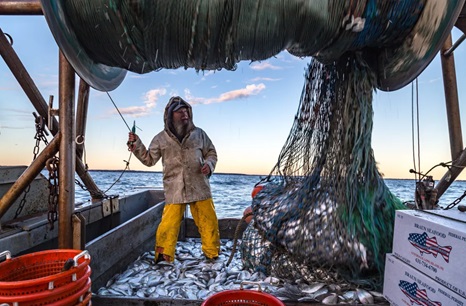
Commercial Fisherman Chris Hamilton Captures Life on the Water
One can only imagine what kinds of things true men of the sea witness while out on the water, their livelihood dependent on making good catches – quite a different sight from the landlubbers seeing traffic lights, stop signs, strip malls and so on. But Chris Hamilton, a lifelong Greenport resident and commercial fisherman, removed the need to imagine when he found a passion for photography aboard his father’s boat one morning. “Being a commercial fisherman on a trawler gives me a very unique perspective,” he says. “It’s not something 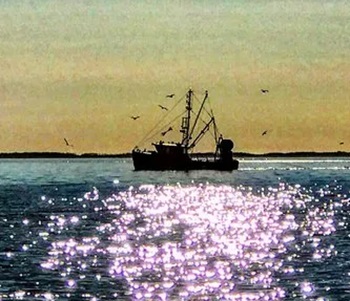 that is widely viewed. It’s a pretty private lifestyle. It really was just being in the moment and kind of just realizing how lucky I was to spend some of those moments on the water with my dad. Fishing is hard, man; it’s a really hard way to make a living, especially these days. You’ve got to be really dedicated. There’s a reason why we do it, and it’s because it’s a beautiful lifestyle. You get to experience nature and in a real way that’s different from other types of work, being on the water. Water is probably the biggest inspiration for me in terms of my art.” Photos, more, >>CLICK TO READ<< 07:01
that is widely viewed. It’s a pretty private lifestyle. It really was just being in the moment and kind of just realizing how lucky I was to spend some of those moments on the water with my dad. Fishing is hard, man; it’s a really hard way to make a living, especially these days. You’ve got to be really dedicated. There’s a reason why we do it, and it’s because it’s a beautiful lifestyle. You get to experience nature and in a real way that’s different from other types of work, being on the water. Water is probably the biggest inspiration for me in terms of my art.” Photos, more, >>CLICK TO READ<< 07:01
Long Island Sound Lost Its Lobster Fishery. Is Cape Cod Bay Next?
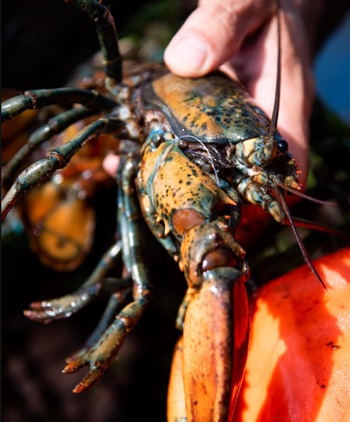 Catches in Cape Cod Bay were good for many years, and prices were good, too. But lobstermen here started worrying in the late 1990s when the fishery collapsed in Long Island Sound. And that worry hasn’t gone away, because environmental changes here resemble those that were affecting Long Island Sound back then. In the aftermath of Tropical Storm Floyd in August 1999, the lobsters in Long Island Sound started coming up dead or lethargic, not making it back to the docks alive. Fall landings for all Connecticut ports dropped between 91 and 99 percent that year, according to a joint report of the state’s dept. of environmental protection and marine fisheries office published in 2000. Fast forward 25 years: hopes for a Long Island Sound population rebound have not panned out. A December 2021 report in the Portland Press Herald introduced Michael Grimshaw this way: “Grimshaw is believed to be the last full-time commercial lobsterman in Connecticut.” His traps used to bring in up to a few thousand pounds a day, wrote reporter David Abel. A good day was now getting him 50 pounds, Grimshaw told him. more, >>CLICK TO READ<< By Capt. Mike Rathgeber 08:40
Catches in Cape Cod Bay were good for many years, and prices were good, too. But lobstermen here started worrying in the late 1990s when the fishery collapsed in Long Island Sound. And that worry hasn’t gone away, because environmental changes here resemble those that were affecting Long Island Sound back then. In the aftermath of Tropical Storm Floyd in August 1999, the lobsters in Long Island Sound started coming up dead or lethargic, not making it back to the docks alive. Fall landings for all Connecticut ports dropped between 91 and 99 percent that year, according to a joint report of the state’s dept. of environmental protection and marine fisheries office published in 2000. Fast forward 25 years: hopes for a Long Island Sound population rebound have not panned out. A December 2021 report in the Portland Press Herald introduced Michael Grimshaw this way: “Grimshaw is believed to be the last full-time commercial lobsterman in Connecticut.” His traps used to bring in up to a few thousand pounds a day, wrote reporter David Abel. A good day was now getting him 50 pounds, Grimshaw told him. more, >>CLICK TO READ<< By Capt. Mike Rathgeber 08:40






